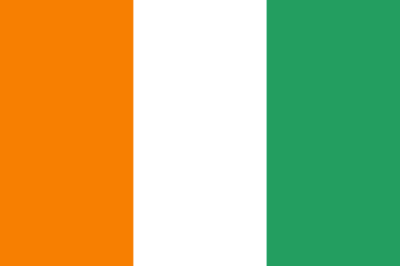Côte D'ivoire
Côte D’Ivoire


Cote d’Ivoire, or the Ivory Coast, is a country in West Africa with a rich and varied past. The history of Cote d’Ivoire is incredibly complicated, spanning from the country’s thriving pre-colonial civilizations through the tangled legacy of French colonialism and the fight for freedom. Come with us on an exciting journey as we explore the history that has molded this multifaceted and dynamic country.
Kingdoms and Empires in the Age Before Colonialism
The Emergence of Akan Societies
In ancient times, the territory now known as Cote d’Ivoire saw the birth of mighty Akan civilizations. Culturally diverse and technologically advanced kingdoms like the Baoulé, Anyi, and Abron thrived throughout this time. The Akan people made an indelible mark on the area with their famous craftsmanship and art.
Powerful Mali and Songhai Dynasties
Cote d’Ivoire was ruled by powerful states like Mali and Songhai in the Middle Ages. These empires made a lasting imprint on the region’s culture and economy with their huge boundaries and thriving trade. Cote d’Ivoire benefited from Islamic influences as well as riches and expertise thanks to its location on the trans-Saharan trade routes.
The Fight for Independence from French Colonialism
French colonial rule and the African scramble
European colonization in Africa began in the late 19th century, and Cote d’Ivoire was a prized possession in the ensuing battle for the continent. The French colonized the nation and quickly began profiting from its thriving cocoa and coffee industries. Cote d’Ivoire’s path to independence was influenced by the French colonial government’s use of forced labor and cultural assimilation efforts.
Independence Struggles and Post-Colonial Difficulties
The flamboyant Félix Houphout-Boigny led Cote d’Ivoire to independence from France in 1960. A country that was once lauded as an economic success story now struggles with political instability, ethnic conflicts, and economic ups and downs. Despite these setbacks, the character of modern Cote d’Ivoire is shaped by the country’s rich cultural history and its status as a significant producer of cocoa and other commodities.
Abidjan, Ado, Afrique, Agban, Agouti, Akwaba, Alloco, Ananas, Arachide, Assinie, Ataya, Attieké, Aya, Babouin, Baobab, Bété, Biabou, Bicé, Bissap, Bonjour, Bouaké, Brou, Cacao, Cafouillage, Camarade, Casse-cou, Cassava, Cepici, Chaleur, Choco, Cissé, Cissoko, Coco, Cola, Communion, Confiance, Coucou, Coupe, Coupé-décalé, Dabou, Dan, Danse, Dioulas, Djembé, Djokouin, Djoss, Drogba, Ébrié, Éléphant, Énergie, État, Fanta, Fèmi, Foulé, Gbaka, Gbazé, Gbê, Gbégbé, Gbofloto, Gbondjou, Gbôla, Gombessa, Gondo, Gouin, Gouro, Grin, Grincheux, Guedro, Guéi, Hévéa, Houphouët, Issiaka, Ivoiriens, Jacaranda, Jasso, Jirouin, Jolé, Koudou, Koulibaly, Koumassi, Kroubi, Kroumen, Lago, Lagoa, Lè, Liguidigi, Lobi, Logos, Mandingues, Manioc, Maracudja, Marahoué, Massa, Momo, Moronou, Moussa, Nangui, Niakaramadougou, Niambré, Nid, Nouchi, Oualas, Ouélé, Palabres, Pango, Pia-pia, Pindjou, Pita, Plateau, Poro, Réconciliation, Région, Riz, Salut, Sankarani, Santé, Sauce, Sénoufo, Sika, Sikensi, Sofitex, Sokodé, Somankidi, Soronkoni, Soubré, Taekwondo, Tagbana, Tchétché, Thieboudienne, Tiep, Tomate, Tô, Toura, Toussian, Vabré, Vêlé, Vévés, Wabé, Wè, Yacouba, Yako, Yopougon, Yossouf, Yssap, Ywé, Zégué, Zouglou, Zoumana













You must be logged in to post a comment Login